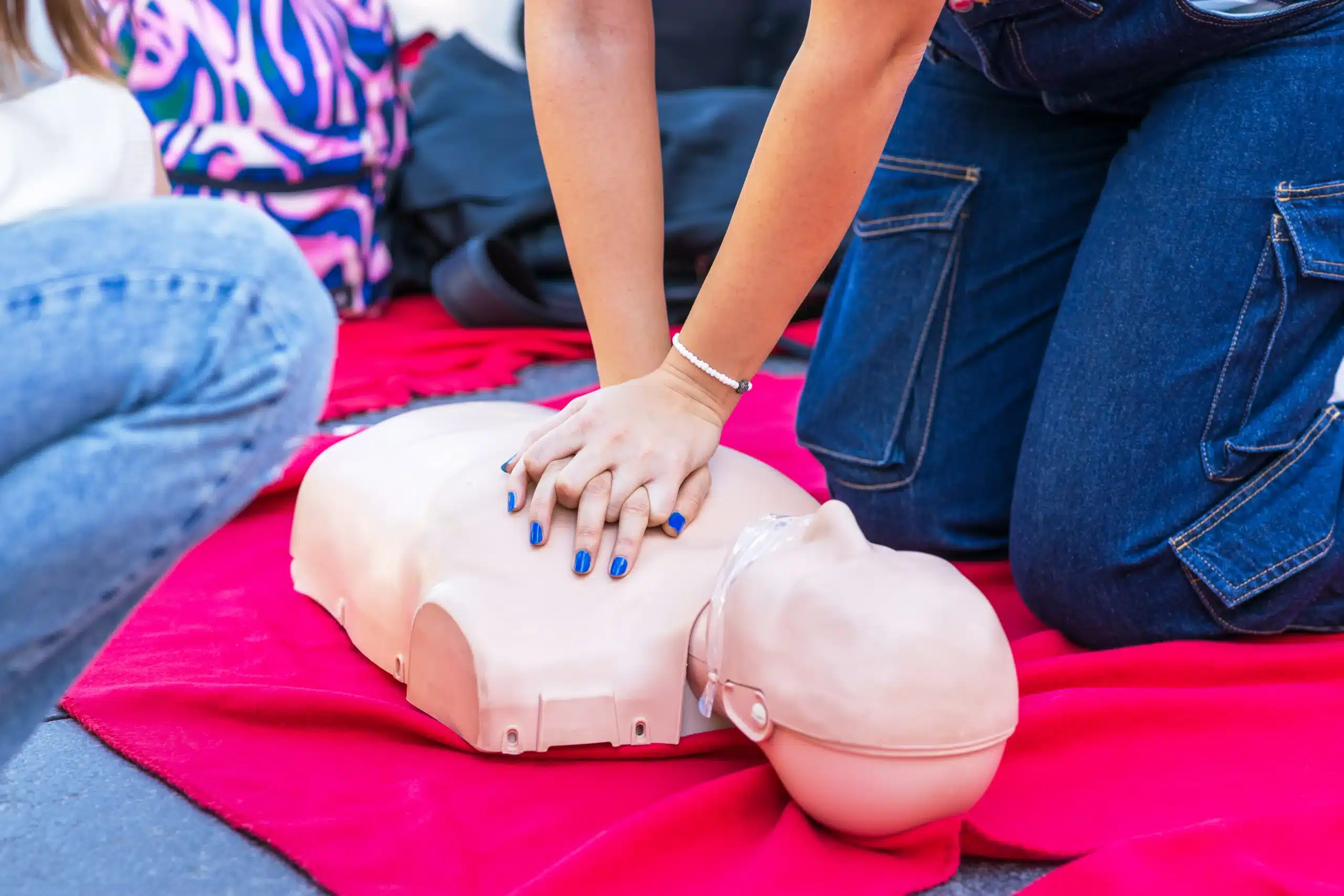Every second counts in a medical emergency. When the heart stops beating, the oxygen supply to the brain and vital organs is disrupted. CPR, or Cardiopulmonary Resuscitation, is the critical life-saving skill designed to bridge this gap. Whether performed by healthcare professionals or bystanders, CPR can make the difference between life and death.
This blog will explore everything you need to know about CPR, including its definition, history, life-saving potential, the role of healthcare providers, how to get certified, and common misconceptions. By the end, you’ll understand why CPR matters and how you can contribute to saving lives.
What Is CPR and Its Role in Healthcare?
CPR stands for Cardiopulmonary Resuscitation, a lifesaving technique crucial during cardiac or respiratory emergencies. It combines manual chest compressions with rescue breaths to maintain blood flow and oxygenation until advanced medical professionals arrive to administer further care.
How CPR Works
The goal of CPR is simple yet profound—restore partial circulation to delay brain damage and death while stabilizing the victim for specialized intervention. Here’s the basic process of CPR:
- Perform 100-120 chest compressions per minute to keep the blood pumping.
- Incorporate rescue breaths (if trained) to provide oxygen.
Healthcare professionals often supplement CPR with an Automated External Defibrillator (AED), a portable device designed to restore normal heart rhythm. However, even without an AED, chest compressions alone are extremely effective in keeping oxygen and blood flowing.
The beauty of CPR lies in its universal applicability—it can be performed anywhere, from hospital settings to homes, schools, and public spaces.
A Brief History of CPR
CPR as we know it has a fascinating history. It wasn’t created overnight; rather, it was born out of centuries of trial, error, and innovation in medicine.
Key Milestones in CPR’s Evolution
- 1500s – Early records of chest compressions in medical manuscripts.
- 1956 – Dr. Peter Safar and Dr. James Elam introduced mouth-to-mouth resuscitation as a modern technique for reviving individuals.
- 1960s – The American Heart Association (AHA) released standardized guidelines for CPR, combining chest compressions with rescue breaths for greater effectiveness.
- Present Day – Scientific advancements have refined CPR techniques, emphasizing high-quality chest compressions and increasing public access to AEDs.
CPR training is now widely accessible, supported by organizations like the AHA, which continues to update guidelines based on cutting-edge medical research.
Importance of CPR in Saving Lives
The statistics around cardiac arrests underscore the critical nature of CPR:
- Around 356,000 out-of-hospital cardiac arrests occur yearly in the United States alone, with 70% of them happening at home.
- Bystander CPR can double or even triple the chances of survival.
The Chain of Survival
CPR is a vital link in the “chain of survival,” a concept developed to improve outcomes for cardiac arrest victims. The chain includes these steps:
- Early recognition of the emergency and calling 911.
- Immediate CPR to maintain blood flow.
- Timely defibrillation through an AED.
- Advanced medical intervention.
- Post-cardiac care at a hospital.
When timely CPR is provided, it increases the odds that the victim will survive and recover with minimal neurological damage.
The Role of Healthcare Professionals in CPR
Healthcare professionals stand as the first line of defense in medical emergencies. CPR is an indispensable skill for these individuals, and proficiency can mean the difference between life and death.
Why CPR Competency Matters
CPR is a core part of healthcare. Nurses, paramedics, physicians, and even hospital administrators are required to maintain active CPR certifications. For professionals, it isn’t just about saving lives; it’s also about improving outcomes. Properly performed CPR reduces recovery times and complications, emphasizing the need for rigorous training.
Ongoing competency is critical. Organizations like the AHA recommend annual re-certifications for healthcare workers to stay updated with the latest techniques and guidelines.
CPR Training and Certification
Steps to Get Certified
Becoming proficient in CPR is more accessible than you might think. Here’s how to get started:
- Find a Certified Program – Organizations like the AHA or Safety Training Seminars offer credible CPR training.
- Choose the Right Certification – Depending on your needs, explore certification options such as Basic Life Support (BLS), CPR with First Aid, Pediatric Advanced Life Support (PALS), or Advanced Cardiac Life Support (ACLS).
- Commit Around 2-4 Hours – Most CPR courses are short but highly practical, blending hands-on training with instructional videos and guides.
Training for Everyone
CPR isn’t just for healthcare professionals. With growing awareness, workplaces, schools, and communities are empowering everyday citizens to become certified. Imagine a world where someone in every room knows CPR—it’s the ripple effect that could save lives.
Debunking Myths About CPR
Several misconceptions can be barriers to action during emergencies. Here’s the truth:
- “Only professionals can perform CPR.” False. Prompt CPR by bystanders is proven to save lives, even if it isn’t perfect.
- “If unsure, it’s better not to act.” False. Doing something is always better than doing nothing during cardiac arrest.
- “CPR is always successful.” While CPR doesn’t guarantee 100% survival, it drastically increases the odds for a positive outcome.
By debunking myths, we can encourage more people to jump into action when minutes matter most.
CPR Skills Are a Lifesaver—Are You Prepared?
Cardiac arrest doesn’t wait for convenience—it can strike anyone, anywhere, at any time. Whether you’re a healthcare professional or a concerned citizen, knowing CPR can save lives, instilling confidence and competence during emergencies.
To ensure you’re prepared, take the next step:
- Get Certified – Enroll in a trusted CPR training course, such as those offered by Safety Training Seminars or the AHA.
- Encourage Others – Advocate for CPR certification in your workplace, community, or school.
- Stay Updated – Even seasoned professionals can benefit from revisiting CPR techniques annually.
When you learn CPR, you’re not just acquiring a skill—you’re becoming a lifeline. Contact us at Safety Training Seminars to learn more about our upcoming classes.








